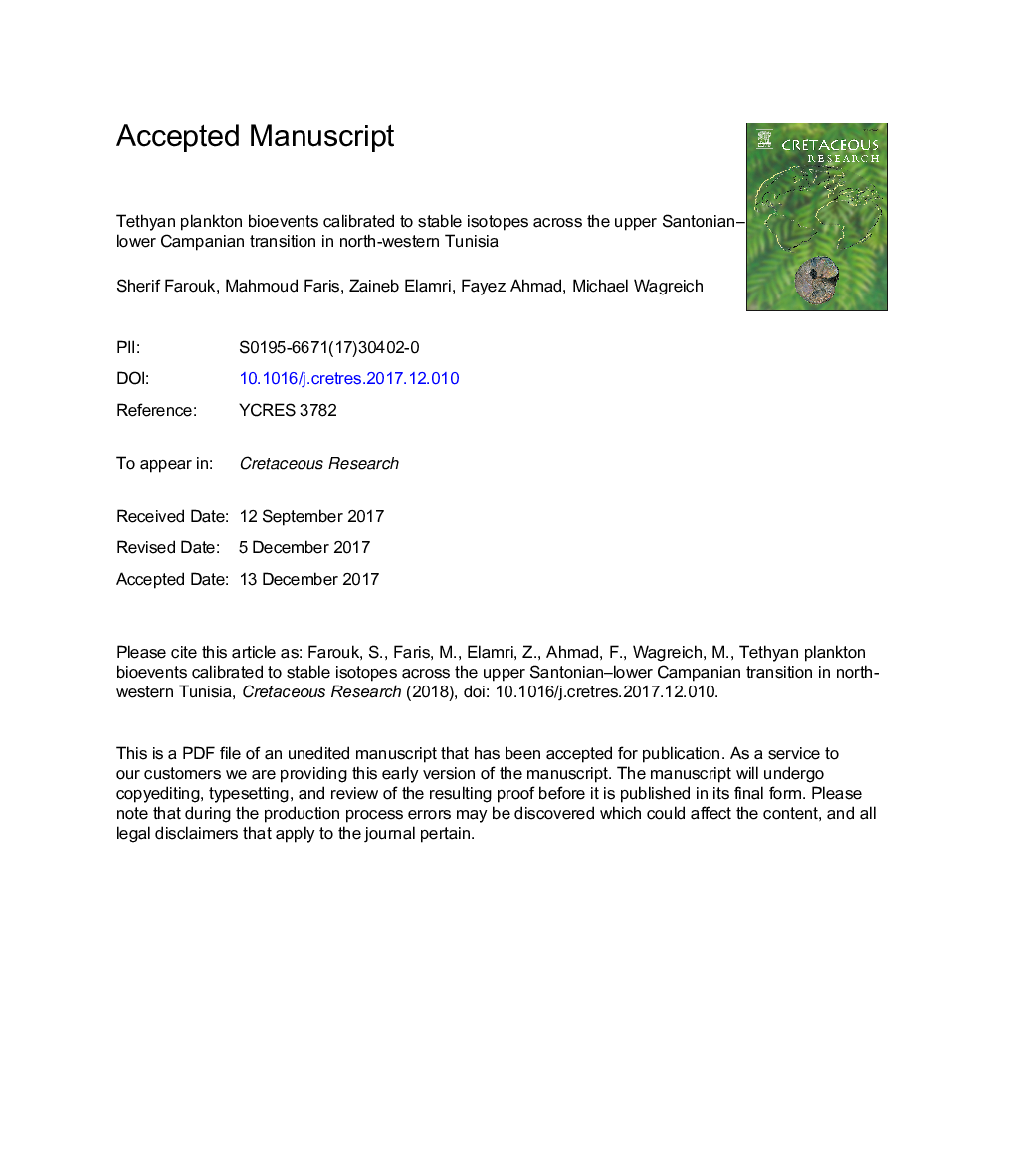| Article ID | Journal | Published Year | Pages | File Type |
|---|---|---|---|---|
| 8916340 | Cretaceous Research | 2018 | 47 Pages |
Abstract
Calcareous nannofossil and planktonic foraminifera biostratigraphic datums are correlated with carbon isotope stratigraphy across the upper Santonian-lower Campanian transition from Ain Zouakra outcrop (Ellès area) in north-western Tunisia. Twenty two calcareous microplankton bio-events are identified and discussed, including 11 planktonic foraminiferal and 11 nannofossil events. The studied upper Santonian-lower Campanian succession can be divided into five nannofossil zones (CC17/UC13 to CC21/UC15c) equivalent to three planktonic foraminiferal zones named Dicarinella asymetrica, Globotruncanita elevata, Globotruncana ventricosa. The Santonian/Campanian Boundary Event (SCBE) is characterized by a positive δ13C double peaks. The first peak (a) occurs within the uppermost CC17 Zone and Dicarinella asymetrica Zone. The second peak (b) directly occurs below the base of CC18 (FO of Bronsonia parca parca) and last occurrence (LO) of Dicarinella asymetrica. It is marked by several extinction bioevents of representatives of Whiteinella, Dicarinella and Sigalia and the gradual disappearance of species of Marginotruncana (all species except M. sinuosa and M. marginata). At the beginning of the Campanian a diversification of Globotruncanidae was noted.
Related Topics
Physical Sciences and Engineering
Earth and Planetary Sciences
Palaeontology
Authors
Sherif Farouk, Mahmoud Faris, Zaineb Elamri, Fayez Ahmad, Michael Wagreich,
